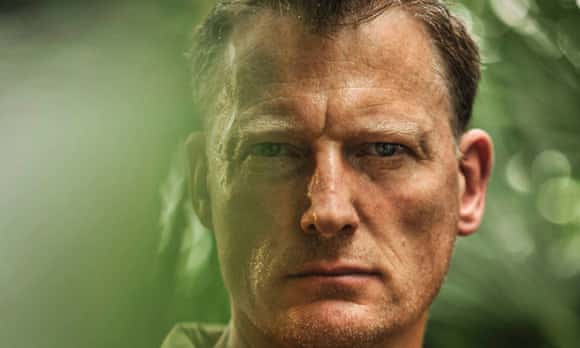 | Lab notes: Aloha 'Oumuamua, welcome to our solar system and a fine week in science! |  |  An artist's impression of interstellar asteroid 'Oumuamua - which is actually red, apparently ... Illustration: ESO/M. Kornmesser/EPA
| Tash Reith-Banks
| This week's biggest stories It was exciting when first detected hurtling past the sun last month, and it's even more exciting now. Astronomers have named the visitor 'Oumuamua and have confirmed that it hails from another star system. Even more intriguingly, its red colour suggests it carries organic molecules that are building blocks of life. Another big hit this week was research revealing why left-handers excel at certain elite sports but not others. Leaving a bitter taste in the mouth, however, was a paper claiming that 50 years ago, the sugar industry withheld research into the effects of sucrose. The paper's authors say the negative health impacts of sucrose could have been combated sooner had the research been released, although industry bodies dispute their findings. Also worrying is a new study linking poor sperm quality to air pollution. Scientists found a strong association between high levels of fine particulate matter and abnormal sperm shape, though the wider impact on fertility remains unclear. And finally, heading into the festive season here is the research you've all been waiting for: a study has concluded that the type of alcohol you're drinking determines whether you become merry or maudlin. Researchers hope understanding a bit more about the emotional impact of alcohol will help people think more carefully about their booze intake. More news from Guardian Science | Sign up to Lab notes ___ Talking point |  |  British explorer Benedict Allen, who was recently rescued from a remote area of Papua New Guinea. Photograph: Martin Hartley/Jo Sarsby Persona/PA
| Criticism of explorer Benedict Allen raises an important question: whether you call yourself an anthropologist, an explorer or a tourist, when is it legitimate to travel to remote communities? Straight from the lab – top picks from our experts on the blog network |  |  Drone photo of the walls of Charax Spasinou, showing the marks of the Iraq-Iran war. Photograph: Stuart Campbell/ Courtesy of the Charax Spasinou Project
| On the Iraq border archaeological digs are a minefield – in every sense | The Past and the Curious
Modern conflict archaeology, the study of 20th and 21st century conflicts, is a new and slightly uncomfortable discipline in the world of archaeology. It's problematic in a number of ways. Firstly, very little of it involves what most people would recognise as archaeology – digging up cultural material from the ground for study. Most of the material legacies of modern conflicts remain above ground and embedded in current society, necessitating a more anthropological, interdisciplinary approach. Secondly, the time periods under study are often within living memory, and often remain highly contentious within the affected regions. This means that modern conflict archaeology can be a political minefield – as well as an actual minefield. I'm currently working in Iraq down in Basra province at the two thousand-year-old city of Charax Spasinou, founded by Alexander the Great in 324 BC. Thirty years ago, however, the site was home to thousands of Iraqi soldiers. Divine intervention: yes, water companies using dowsing really is that bad | Brain flapping OK, so most UK water companies have people who use divining rods to find leaks and burst pipes, although many have since back-pedalled on these admissions since the story broke, thanks to the sterling work of science writer Sally Le Page, who deserves all credit for it. Understandable perhaps; if you were a major utility provider earning millions by providing an essential resource to large populations, you'd probably be a bit embarrassed if people found out your highly-trained and expensive technicians were essentially using witchcraft to fix problems. But, the expense and professionalism aspects aside, is it really that bad? The media has a problem with alcoholism – and it's stopping people getting help | Sifting the evidence Shifting perceptions away from the false binary of alcoholism and its inherent disease connotations has other important implications. From a public health perspective, the majority of England's ten million drinkers at risk of alcohol-related harms are not addicted, at least not to the extent they would consider themselves as alcoholic. Even of the 1.6 million harmful drinkers, many do not consider their drinking as problematic, instead pointing to those with heavier consumption than their own. I see this "othering" as a valid form of denial; heavy drinkers often correctly assert that they are not alcoholics as they do not conform to stereotypical beliefs about alcoholics as dysfunctional and unable to exert any control over their drinking. This valid denial is facilitated by the culturally endorsed but artificial dividing line between alcoholics and everyone else. Whilst explanations for denial itself are also complex, the belief that only alcoholics need help undermines many heavy drinkers from contemplating change. Horse-eating birds and Demon Ducks of Doom: untangling the fowl family tree | Lost Worlds Revisited There are several groups of enormous, extinct terrestrial birds that are considered part of Galloanserae. One of them is the Dromornithidae, or Thunderbirds, from Australia. These giant flightless birds lived from the Oligocene until the Pleistocene and formed part of Australia's megafauna (Worthy & Holdaway, 2002). Some dromornithids reached colossal size, such as Bullockornis, nicknamed the Demon Duck of Doom, which likely stood 2.5 metres tall. Visit the Science blog network _____ Alex Bellos's Monday puzzle |  |  How do you like them apples? Photograph: Christopher Furlong/Getty Images
| This is hard core: Alex's logic puzzle this week has a certain, fiendish a-peel ... Did you solve it, or did you run out of juice? Visit Alex Bellos's Adventures in Numberland blog for more marvellous maths ___
Science Weekly podcast |  |  Leopold Eric Fotso undergoes the first trial of a new therapy for schizophrenia at Kings College Hospital's Clinical Research Facility. Photograph: Teri Pengilley for the Guardian
| What role might the immune system play in mental illness? And how might this challenge long-held beliefs about the divide between body and brain? Hannah Devlin explores a new approach for mental disorders in this Science Weekly podcast. ___ Eye on science – this week's top video |  | All right, it's science fiction rather than science proper, but here's a very long-awaited bit of time travel to brighten your Friday! | | Guardian News & Media Limited - a member of Guardian Media Group PLC. Registered Office: Kings Place, 90 York Way, London, N1 9GU. Registered in England No. 908396 |
| | | |
No comments:
Post a Comment